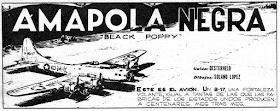It was Thursday, September 25, 2008: the day I wrote my first post on The Crib.
In my last post I wrote "Ten years is a long time in a person's life". What changed, according to yours truly, natch, in these ten years, both personally and in the comics field?
Personally I don't have much to say: let's just disclose that I'm less and less inclined to write and leave it at that... Proof enough of what I'm saying is my failing to deliver (thanks again to the seven of you who showed interest in reading my putative twenty five texts!, unfortunately I wrote only two!).
In the comics field many things changed. If we take Berlin by Jason Lutes and Clyde Fans by Seth (I still haven't read these fine graphic novels, I'm sure they are fine, in a sitting, something I intend to do in a not so distant future) we reach the following conclusions: first there were the pamphlets, then the volumes, and now the brick (or, in Berlin's case, the third volume and the brick at the same time). These are hinge books that were done over a huge period of time. Hence they witnessed the end of the pamphlet, the end of the trade paperback collection, and the triumph of the graphic novel.
Are we better or worst than we were ten years ago? Sincerely, I'm not sure... Maybe it's just me and I lost touch with the field (I still haven't read My Favorite Thing Is Monsters or Sabrina or Barcazza, for instance), but I don't see any improvements, on the contrary. Don't ask me to explain why either, it's just a vague feeling, maybe provoked by my insistence in following my generation of creators (those so many who promised so much at the beginning of the 1990s and remain so few now) and my lack of interest in finding new voices... their drawing styles and sterile experiments leave me cold, to tell you the truth...
Héctor Germán Oesterheld (w), Francisco Solano López (a), "Amapola Negra - 'Black Poppy'," Hora Cero # 15, July 1958.
Enough whining and on to another thing. Since I promised and I didn't deliver, as I said above, at least I'm posting the list of my favorite comics as a kind of commemoration for The Crib's ten years. It's a list of 34 with a couple of "anomalies": John Porcellino, for instance has two titles at number 7; ditto Seth at number 18. Is this list wanting in gender and ethnicity equality? Yes it is and I have no excuses: I also refuse any kind of positive discrimination.
Could this list be different? Of couse it could. Early on I discovered that this is an impossible task. To do it right is a full time job in itself. Most of the stories below are there because I vaguely remember liking them years ago. Would I like them as much upon rereading? I'm not so sure...
There's no Picasso, Goya or Hokusai below. Needless to say that they would be number one, two and three, with Jacques Callot following, in a more open minded list. These are my favorite restrict field comics, not my favorite comics, period.
1 – Amapola
Negra – Black Poppy (Héctor Germán Oesterheld, Francisco Solano López)
2 – Matt Marriott: Isepinal the Apache (James Edgar, Tony Weare)
3 – Muno no Hito [The Man Without Talent] (Yoshiharu Tsuge)
4 –
Convoy a Malta (Héctor Germán Oesterheld, Hugo Pratt)
5 – Zil
Zelub (Guido Buzzelli)
6 – Sa-lo-mon (Chago Armada)
7
– Sam / Perfect Example (John Porcellino)
8 – Le
journal de Jules Renard lu par Fred (Fred)
9 –
Randall: Jinetes Vengadores (Héctor Germán Oesterheld, Arturo del Castillo)
10
– Fuck (Chester Brown)
11 –
Les soeurs Zabîme (Aristophane)
12 – Sudor Sudaca (Carlos Sampayo, José Muñoz)
13 – The
Most Obvious Question (Lynda Barry)
14 –
Journal III (Fabrice Neaud)
15 –
Conte demoniaque (Aristophane)
16 – La
Orilla (Elisa Gálvez, Federico del Barrio)
17 – Nègres
jaunes (Yvan Alagbé)
18 – Calgary,
Clyde Fans (Seth)
19 – Graffiti Kitchen (Eddie Campbell)
20 – Haruka-na machi e [A Distant Neighborhood] (Jiro Taniguchi)
21 – Carol Day: Jack Slingsby (David Wright)
22 – Un tal Daneri (Carlos Trillo, Alberto Breccia)
23 – La
bascule à Charlot (Jacques Tardi)
24 – Building Stories (Chris Ware)
25 – El
artefacto perverso (Felipe Hernández Cava, Federico del Barrio)
26 – Le
portrait (Edmond Baudoin)
27 –
Par les sillons (Vincent Fortemps)
28 –
Aruko Hito [The Walking Man] (Jiro Taniguchi)
29 – El prolongado sueño del Sr. T. (Max)
30 – Speak
Low (Montesol)
31 –
Somnambule (Anke Feuchtenberger)
32 – La
Pluie (Philippe de Pierpont, Eric Lambé)
33 – Safe
Area Gorazde (Joe Sacco)
34 – The Adjustment of Sydney Deepscorn (Barron Storey)




















